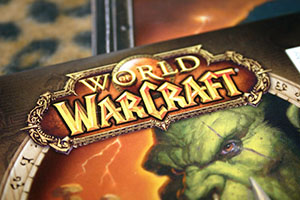Judge Dismisses Case over Alleged Copying of Warcraft Characters
Get Legal Help Today
Find the right lawyer for your legal issue.
Secured with SHA-256 Encryption
Mary Martin
Published Legal Expert
Mary Martin has been a legal writer and editor for over 20 years, responsible for ensuring that content is straightforward, correct, and helpful for the consumer. In addition, she worked on writing monthly newsletter columns for media, lawyers, and consumers. Ms. Martin also has experience with internal staff and HR operations. Mary was employed for almost 30 years by the nationwide legal publi...
Published Legal Expert
UPDATED: Jul 16, 2021
It’s all about you. We want to help you make the right legal decisions.
We strive to help you make confident insurance and legal decisions. Finding trusted and reliable insurance quotes and legal advice should be easy. This doesn’t influence our content. Our opinions are our own.
Editorial Guidelines: We are a free online resource for anyone interested in learning more about legal topics and insurance. Our goal is to be an objective, third-party resource for everything legal and insurance related. We update our site regularly, and all content is reviewed by experts.
UPDATED: Jul 16, 2021
It’s all about you. We want to help you make the right legal decisions.
We strive to help you make confident insurance and legal decisions. Finding trusted and reliable insurance quotes and legal advice should be easy. This doesn’t influence our content. Our opinions are our own.
On This Page
A federal judge in Northern California dismissed a complaint by the makers of World of Warcraft and other games alleging that mobile game developers had copied the games’ characters. Blizzard Entertainment, Inc. and Valve Corporation sued Lilith Games (Shanghai) Co. Ltd. and uCool, Inc. for copyright infringement.
According to the complaint,
Lilith and uCool’s mobile games impermissibly copied the characters, “settings, terrain, background art, and other assets” from Plaintiffs’ numerous video game franchises.
The Warcraft Universe
As described by Blizzard,
All of the “Warcraft” games take place in the “Warcraft” universe, which is populated by an enormous variety of distinctive mythical creatures and characters, such as tech-savvy goblins, huge winged demons, bovine humanoids known as “Taurens,” serpentine sea creatures known as “Naga,” giant humanoid panda warriors known as “Pandaren,” tall purple-skinned elves known as “Night Elves,” sentient trees known as “Ancients,” and hundreds of others. Many instances of these creatures are distinctive characters in their own right, with names, distinctive physical appearances, clothing, weapons, traits, abilities, and ongoing stories.
Protecting Characters
It’s possible to protect characters under copyright law, but only in limited circumstances.
“Stock” characters (e.g., the hard-boiled detective, the lone gunslinger, the femme fatale) aren’t protected under copyright law.
The court noted:
The Ninth Circuit has held that “copyright protection is available only ‘for characters that are especially distinctive.’ To meet this standard, a character must be ‘sufficiently delineated’ and display ‘consistent, widely identifiable traits.’”
To be “distinctive,” said the court, a character must:
- have physical as well as conceptual traits
- be recognizable as the same character whenever it appears, and
- contain unique elements
The Batmobile as a Character
For example, the Ninth Circuit found that the Batmobile, although an inanimate object, met the requisites to be considered a “character”:
In addition to its status as “a highly-interactive vehicle, equipped with high-tech gadgets and weaponry used to aid Batman in fighting crime,” the Batmobile is almost always bat-like in appearance, with a bat-themed front end, bat wings extending from the top or back of the car, exaggerated fenders, a curved windshield, and bat emblems on the vehicle. This bat-like appearance has been a consistent theme throughout the comic books, television series, and motion picture…
Failing to Plead
The judge found that:
although Plaintiffs allege that “dozens of characters from [defendant’s] ‘Heroes Charge’ are derived from and substantially similar to Blizzard and Valve’s characters,” they plead no facts demonstrating that any one of the dozens of characters are plausibly copyrightable. …
The judge dismissed the complaint with leave to amend. This means that the plaintiffs will have the chance to revise their complaint to make it more specific about the aspects of the characters that are claimed to be “distinctive.” The case is Blizzard Entm’t, Inc. v. Lilith Games (Shanghai) Co.
Clone Wars
Last year, Lilith announced that it was filing suit against uCool, saying that uCool’s game Heroes Charge was essentially a clone of Lilith’s Soul Clash. According to BlizzardWatch,
Lilith Games put in hidden code to protect their game from copyright infringement — tapping a certain area of the screen in Heroes Charge actually brings up a copyright notice from Lilith Games.
(Photo Credit: Juan Pablo Olmo, on Flickr. Licensed under CC BY-SA 2.0.)
Find the right lawyer for your legal issue.
Secured with SHA-256 Encryption
Mary Martin
Published Legal Expert
Mary Martin has been a legal writer and editor for over 20 years, responsible for ensuring that content is straightforward, correct, and helpful for the consumer. In addition, she worked on writing monthly newsletter columns for media, lawyers, and consumers. Ms. Martin also has experience with internal staff and HR operations. Mary was employed for almost 30 years by the nationwide legal publi...
Published Legal Expert
Editorial Guidelines: We are a free online resource for anyone interested in learning more about legal topics and insurance. Our goal is to be an objective, third-party resource for everything legal and insurance related. We update our site regularly, and all content is reviewed by experts.

